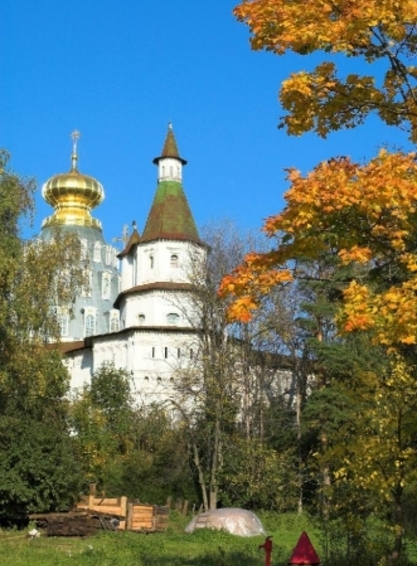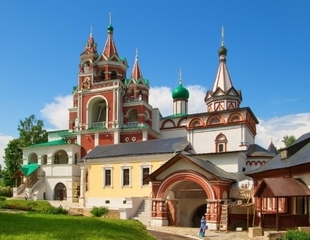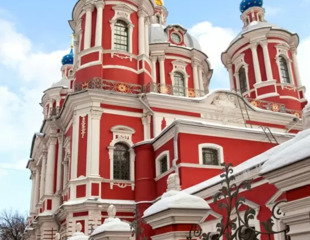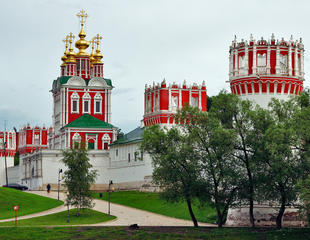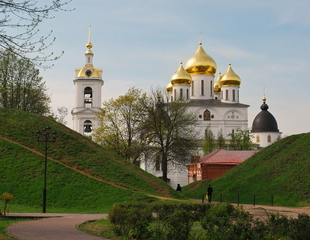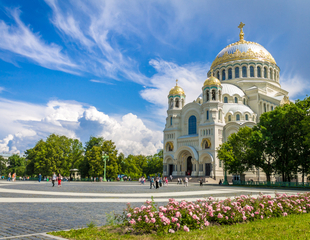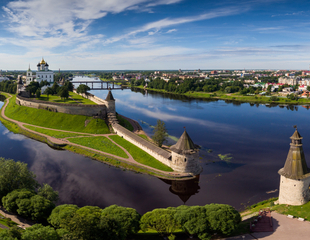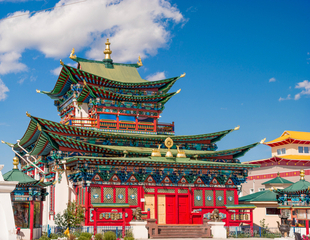The New Jerusalem (Resurrection) Monastery is a male monastery, located in the town of Istra, Moscow Region. The monastery was founded in 1656 by Patriarch Nikon, according to whose plan there had to be re-established the complex of holy places of Palestine near Moscow.
The outskirts of the future monastery underwent redevelopment: the forest along the Istra River was cut down, the hill on which the monastery was built, was piled up and strengthened. A huge number of monastic farmers was attracted for large-scale construction work. The previous names were changed to new ones, taken from the Gospel texts.
The male monastery was built on the hill, called Zion. The Eleon Hill with the stone Eleon Chapel was located to the east of the Zion hill, there was the Tabor Hill in the north. On the bank of the Istra River, renamed into Jordan, there was built the monastery of the patriarch, where the Epiphany Church and St. Peter and Paul Church were placed. There was also found a small convent — Bethany, named for the city mentioned in the New Testament. Some buildings replicate contours of buildings of Jerusalem, like the Resurrection Cathedral, created to resemble the Church of the Holy Sepulcher.
A distinctive feature of the cathedral is architectural ceramics that adorn its interiors and facades. The ceramic decoration in the middle of the XVII century was designed by such masters as Peter Zaborsky, Stepan Polubes, and Ignatius Maximov. There was built a complex of traditional Russian wooden architecture structures on the territory of the monastery. In 1656, there was constructed a wooden Church of the Resurrection with the refectory and staff rooms.
In 1919, the monastery was closed. Since 1921, there were two museums on its territory: the History and Arts Museum and Local History Museum, which in 1922 were merged into the State History and Arts Museum. Its collection included objects of the monastery churches and sacristy, the exhibits of the Museum of the memory of Patriarch Nikon, paintings of the art gallery, located in the refectory, archaeological materials, items from estates of the western part of Moscow Province. In 1941, many architectural monuments including the Resurrection Cathedral was destroyed. In 1959, the museum was reopened, the buildings of the monastery were restored, except for the main architectural dominant — a gigantic tiered belfry of the XVII century. In 1994, the New Jerusalem Monastery was reopened.

